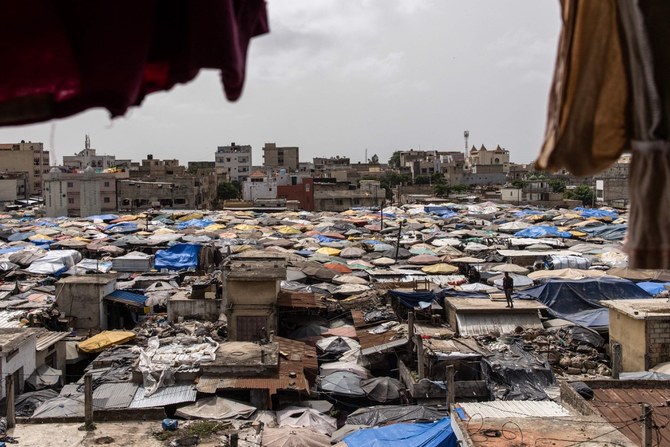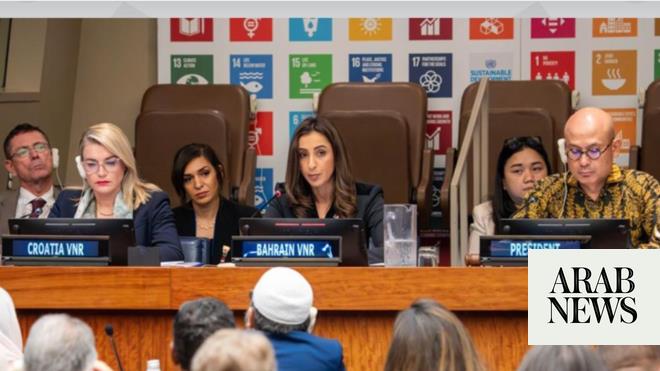
Global leaders are next week expected to participate in a special summit called by UN Secretary-General Antonio Guterres to take stock of the world’s progress, or rather lack of it, toward meeting the UN’s Sustainable Development Goals.
In many ways, the stock-taking meeting will not be so much about discussing the status of the progress, but more to do with finding ways to put the world back on track. Over the past three years, the world has seen years of progress erased on many of the goals, mainly due to the COVID-19 pandemic and its aftermath.
As per the UN SDG progress report released earlier this year, the world is on track to achieve only 15 percent of the roughly 140 goals, it is moderately or severely offtrack in close to half of them and is either stagnated or has regressed in 37 percent. With little more than six years left until the 2030 deadline, the report card is dire. It would be better to accept that the world is on course to miss the deadline for at least 50 percent of the goals, even if it puts unprecedented effort, money and sincerity into meeting them.
Certainly, part of this is due to the pandemic, whose severe impact was felt in about half a dozen goals, notably poverty eradication, nutrition, education, good health and well-being, as well as reducing inequality. Many of those goals, like life on land, life in the water and sustainable cities, have been trashed due to humanity’s total disregard and the numerous broken promises and commitments. This is not just by a few actors, but almost every single large emitter of greenhouse gases — or every country in the developed world.
It would be better to accept that the world is on course to miss the deadline for at least 50 percent of the goals
Ranvir S. Nayar
As has become the norm, the price for these missed commitments, just like the pandemic, is being paid by the developing nations, especially those at the bottom of the pile, namely those in sub-Saharan Africa and South Asia, along with the Small Island Developing States.
The first SDG goal is the eradication of poverty by 2030. Here, certainly, progress was made during the first five years after the target was set in 2015. However, the pandemic caused a massive setback in the battle to end poverty and, for the first time in more than two decades, the number of people living in extreme poverty actually rose, by almost 100 million to about 676 million at the end of 2022. This is about 8.5 percent of the global population.
As a percentage, it may not look colossal, but ending poverty entirely is the target and even most of the developed world has failed to achieve this, as it is home to more than 7 million people in extreme poverty. According to the World Bank, UN SDG 1 looks set to be missed by a wide margin, as it projects the number of extremely poor people to be about 575 million by 2030. It says that the eradication of poverty will be toughest in areas where it is most prevalent, including Sub-Saharan Africa, conflict-affected areas and rural areas.
The situation is even more alarming when it comes to the second goal: zero hunger by 2030. The UN says that the number of people facing hunger and food insecurity has been rising since 2015 and, last year, about 735 million people — or 9.2 percent of the global population — was facing chronic hunger, some 122 million more than in 2019.
In addition, as many as 29.6 percent of the global population, or 2.4 billion people, lacked access to adequate food. This was up by 391 million compared to 2019. With food inflation still running close to record levels and global agriculture impacted by climate change and conflict in equal parts, access to food is likely to stay constricted for many years to come.
A fresh and immediate large cash injection could perhaps save the day in some areas and at least stop the regression
Ranvir S. Nayar
The progress is mixed on the third goal, which relates to global health. While the world has progressed in terms of reducing the mortality of children under-5, as well as in fighting HIV, it has failed to improve maternal mortality and about 800 women still die in childbirth every day. And as many as 381 million people were either pushed into or deeper into extreme poverty in 2019 due to out-of-pocket payments for health.
The picture is equally dismal in terms of inequality, which, instead of being erased, has become more acute than ever. And the news on climate-related goals is perhaps as cataclysmic as it is regarding poverty and hunger.
Thus, when world leaders meet at the UN, the best course — or perhaps the only course — would be to accept the truth that they have failed miserably in advancing toward most of the SDGs and that the deadline of 2030 will be missed. In fact, it will probably be missed as badly as the 2015 deadline for the UN Millennium Development Goals, which was set in 2000.
The only option for the global community will be to prioritize the goals that are existential, such as health, hunger, poverty and some of the climate goals. A fresh and immediate large cash injection by the rich member states and a display of unprecedented social responsibility by the global business behemoths — many of which are sitting on profits of several hundreds of billions of dollars — could perhaps save the day in some areas and at least stop the regression.
If the world leaders instead push back the deadline for these goals once again, renaming them and giving themselves another 15 to 20 years, they would not only be fooling themselves more than anyone else, but they would also have to bear responsibility for the millions of preventable deaths that are set to occur due to their failure. It is a question of life and death. This is no time to haggle. For once, the leaders need to practice what they have long preached.
• Ranvir S. Nayar is managing editor of Media India Group.











